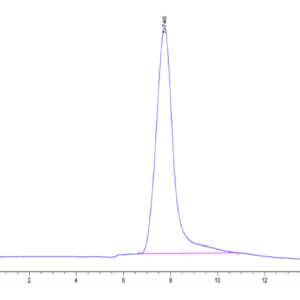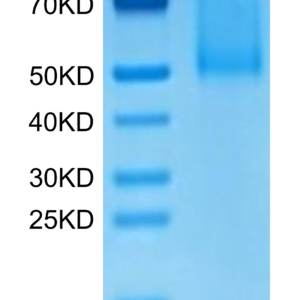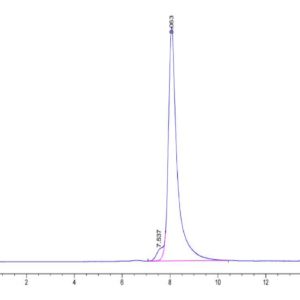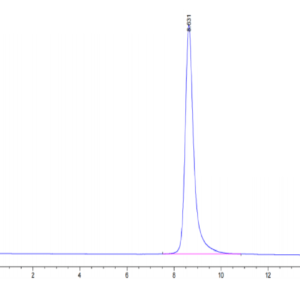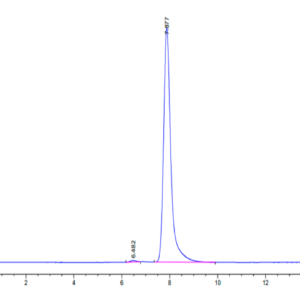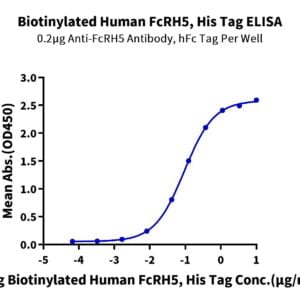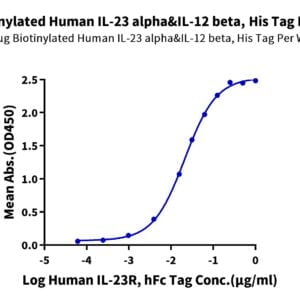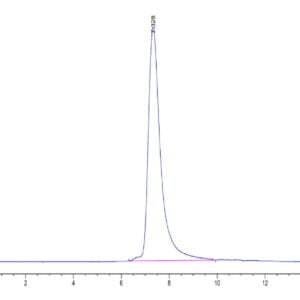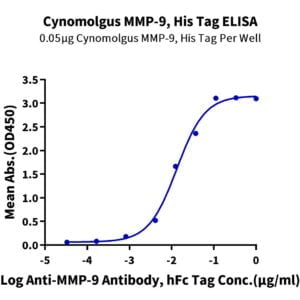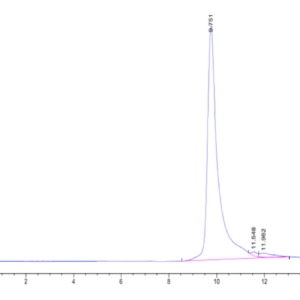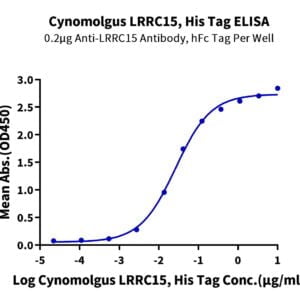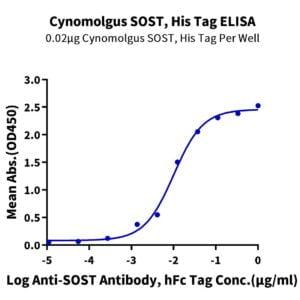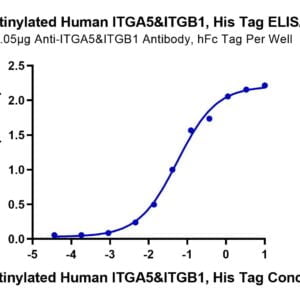| Weight | 1 lbs |
|---|---|
| Dimensions | 9 × 5 × 2 in |
| express system | HEK293 |
| product tag | C-His-Avi |
| purity | > 95% as determined by Tris-Bis PAGE;> 95% as determined by HPLC |
| background | Fibroblast growth factor receptor 4 (FGF R4), also known as CD334, is a 110 kDa glycosylated transmembrane receptor tyrosine kinase.Tyrosine-protein kinase that acts as cell-surface receptor for fibroblast growth factors and plays a role in the regulation of cell proliferation, differentiation and migration, and in regulation of lipid metabolism, bile acid biosynthesis, glucose uptake, vitamin D metabolism and phosphate homeostasis. Required for normal down-regulation of the expression of CYP7A1, the rate-limiting enzyme in bile acid synthesis, in response to FGF19. |
| molecular weight | The protein has a predicted MW of 41.4 kDa. Due to glycosylation, the protein migrates to 55-72 kDa based on Tris-Bis PAGE result. |
| available size | 100 µg, 500 µg |
| endotoxin | Less than 1EU per μg by the LAL method. |
Biotinylated Human FGFR4 Protein 4817
$525.00 – $1,750.00
Summary
- Expression: HEK293
- Pure: Yes (HPLC)
- Amino Acid Range: Leu22-Asp369
Biotinylated Human FGFR4 Protein 4817
| protein |
|---|
| Size and concentration 100, 500µg and lyophilized |
| Form Lyophilized |
| Storage Instructions Valid for 12 months from date of receipt when stored at -80°C. Recommend to aliquot the protein into smaller quantities for optimal storage. Please minimize freeze-thaw cycles. |
| Storage buffer Shipped at ambient temperature. |
| Purity > 95% as determined by Tris-Bis PAGE |
| target relevance |
|---|
| Fibroblast growth factor receptor 4 (FGF R4), also known as CD334, is a 110 kDa glycosylated transmembrane receptor tyrosine kinase.Tyrosine-protein kinase that acts as cell-surface receptor for fibroblast growth factors and plays a role in the regulation of cell proliferation, differentiation and migration, and in regulation of lipid metabolism, bile acid biosynthesis, glucose uptake, vitamin D metabolism and phosphate homeostasis. Required for normal down-regulation of the expression of CYP7A1, the rate-limiting enzyme in bile acid synthesis, in response to FGF19. |
| Protein names Fibroblast growth factor receptor 4 (FGFR-4) (EC 2.7.10.1) (CD antigen CD334) |
| Gene names FGFR4,FGFR4 JTK2 TKF |
| Protein family Protein kinase superfamily, Tyr protein kinase family, Fibroblast growth factor rec |
| Mass 9606Da |
| Function Tyrosine-protein kinase that acts as a cell-surface receptor for fibroblast growth factors and plays a role in the regulation of cell proliferation, differentiation and migration, and in regulation of lipid metabolism, bile acid biosynthesis, glucose uptake, vitamin D metabolism and phosphate homeostasis. Required for normal down-regulation of the expression of CYP7A1, the rate-limiting enzyme in bile acid synthesis, in response to FGF19. Phosphorylates PLCG1 and FRS2. Ligand binding leads to the activation of several signaling cascades. Activation of PLCG1 leads to the production of the cellular signaling molecules diacylglycerol and inositol 1,4,5-trisphosphate. Phosphorylation of FRS2 triggers recruitment of GRB2, GAB1, PIK3R1 and SOS1, and mediates activation of RAS, MAPK1/ERK2, MAPK3/ERK1 and the MAP kinase signaling pathway, as well as of the AKT1 signaling pathway. Promotes SRC-dependent phosphorylation of the matrix protease MMP14 and its lysosomal degradation. FGFR4 signaling is down-regulated by receptor internalization and degradation; MMP14 promotes internalization and degradation of FGFR4. Mutations that lead to constitutive kinase activation or impair normal FGFR4 inactivation lead to aberrant signaling. |
| Catalytic activity BINDING 473..481; /ligand="ATP"; /ligand_id="ChEBI:CHEBI:30616"; /evidence="ECO:0000255|PROSITE-ProRule:PRU00159"; BINDING 503; /ligand="ATP"; /ligand_id="ChEBI:CHEBI:30616"; /evidence="ECO:0000255|PROSITE-ProRule:PRU00159" |
| Subellular location Cell membrane; Single-pass type I membrane protein. Endosome. Endoplasmic reticulum. Note=Internalized from the cell membrane to recycling endosomes, and from there back to the cell membrane.; [Isoform 2]: Secreted. |
| Tissues Expressed in gastrointestinal epithelial cells, pancreas, and gastric and pancreatic cancer cell lines. |
| Structure Monomer. Homodimer after ligand binding. Interacts with FGF1, FGF2, FGF4, FGF6, FGF8, FGF9, FGF16, FGF17, FGF18, FGF19, FGF21 and FGF23 (in vitro). Binding affinity for FGF family members is enhanced by interactions between FGFs and heparan sulfate proteoglycans. Interacts with KLB; this strongly increases the affinity for FGF19 and FGF23. Affinity for FGF19 is strongly increased by KLB and sulfated glycosaminoglycans. KLB and KL both interact with the core-glycosylated FGFR4 in the endoplasmic reticulum and promote its degradation, so that only FGFR4 with fully mature N-glycans is expressed at the cell surface. Identified in a complex with NCAM1, CDH2, PLCG1, FRS2, SRC, SHC1, GAP43 and CTTN. Interacts with MMP14 and HIP1 (PubMed:11433297, PubMed:16597617, PubMed:17623664, PubMed:18670643, PubMed:20683963, PubMed:20798051, PubMed:21653700, PubMed:7518429, PubMed:8663044). Interacts with STAT3 (PubMed:26675719). |
| Post-translational modification N-glycosylated. Full maturation of the glycan chains in the Golgi is essential for high affinity interaction with FGF19.; Ubiquitinated. Subject to proteasomal degradation when not fully glycosylated.; Autophosphorylated. Binding of FGF family members together with heparan sulfate proteoglycan or heparin promotes receptor dimerization and autophosphorylation on tyrosine residues. Autophosphorylation occurs in trans between the two FGFR molecules present in the dimer. |
| Target Relevance information above includes information from UniProt accession: P22455 |
| The UniProt Consortium |
Data
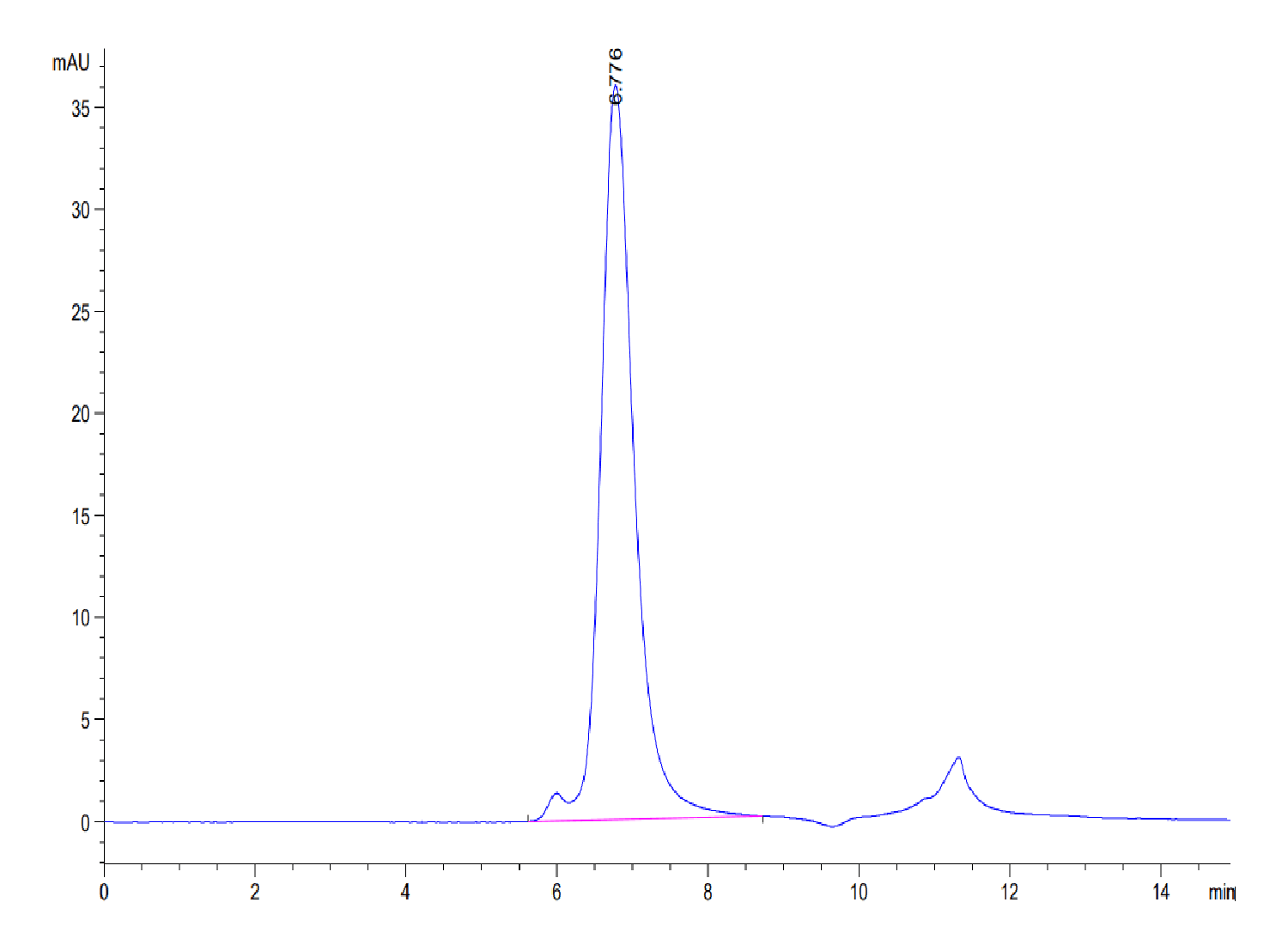 |
| The purity of Biotinylated Human FGFR4 is greater than 95% as determined by SEC-HPLC. |
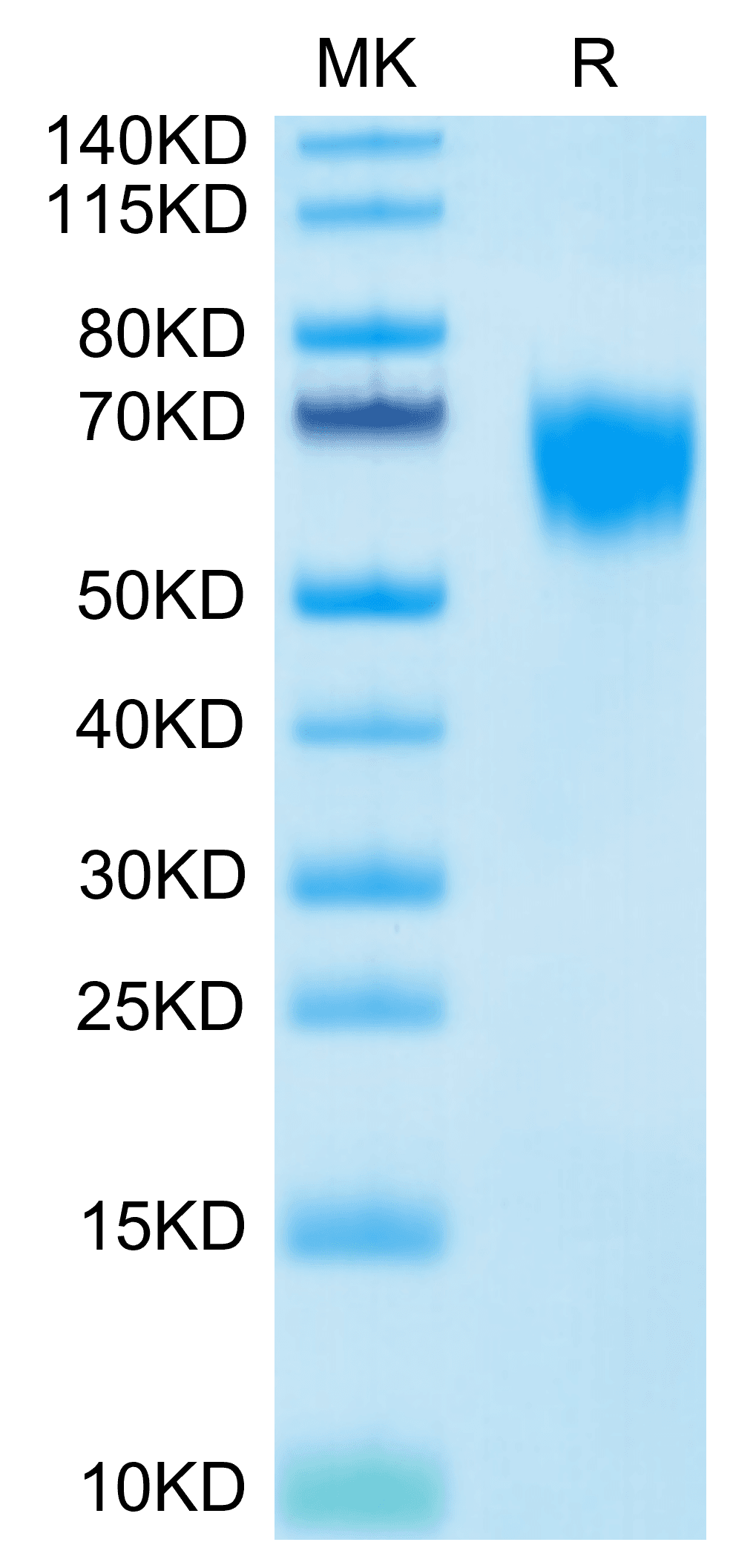 |
| Biotinylated Human FGFR4 on Tris-Bis PAGE under reduced condition. The purity is greater than 95%. |
Publications
Publications
| pmid | title | authors | citation |
|---|---|---|---|
| We haven't added any publications to our database yet. | |||
Protocols
| relevant to this product |
|---|
Documents
| # | ||
|---|---|---|
| Please enter your product and batch number here to retrieve product datasheet, SDS, and QC information. | ||
